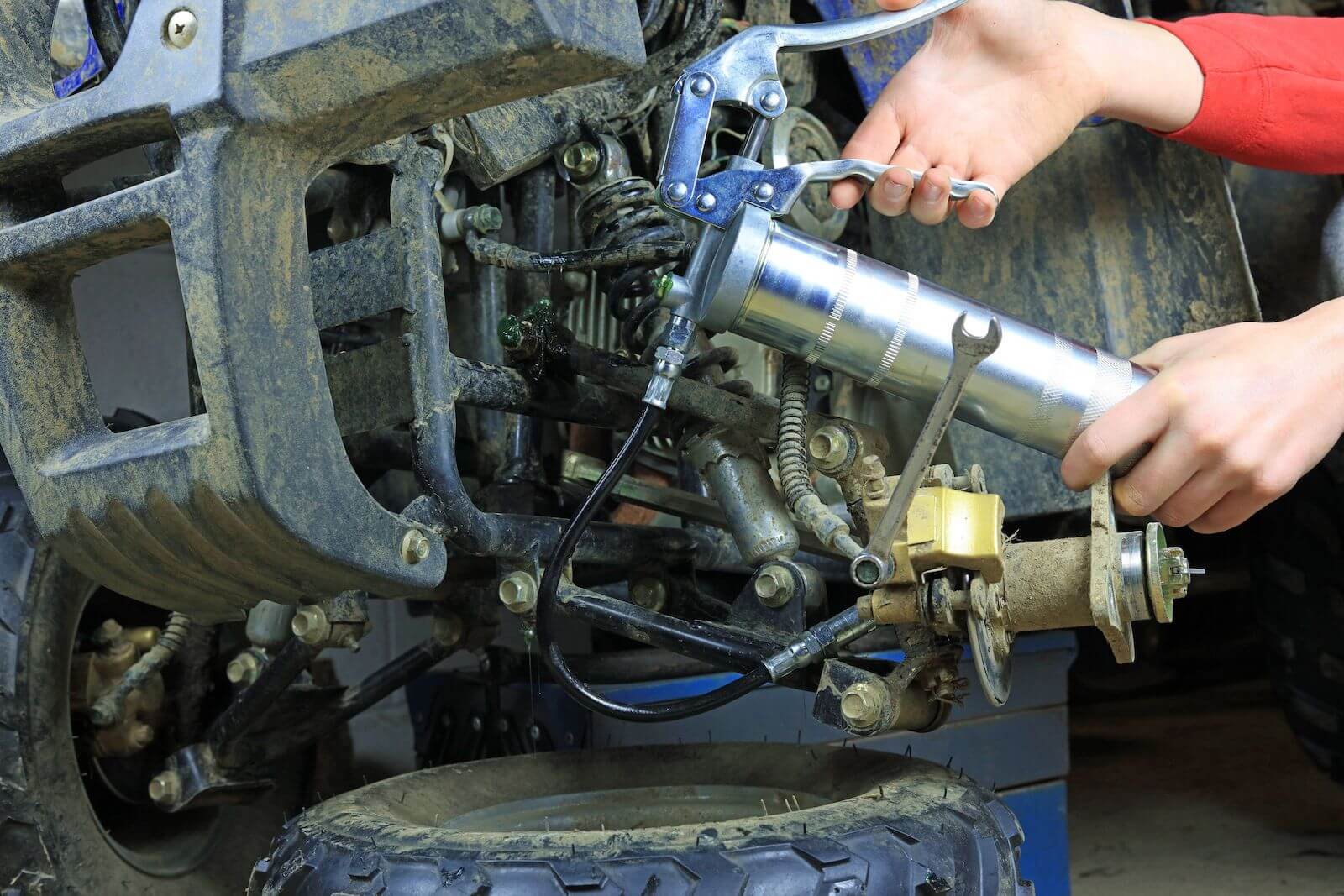There are two kinds of people in the world. Those that are afraid to switch greases and those that switch all the time. In fact, one of the top questions our customer service department receives is: “I am using brand X grease can I switch to your grease without any issues?”
It is a great question, and the answer requires that we know how a grease is made, so let’s tackle that first.
What is Grease?
Grease is a very specialized lubricant composed of a base oil, thickener, and additives. By weight, the base oil will make up 80-90% of the grease specifications; the remaining 10-20% is made up by the thickener and additives.

By weight, additives typically make up the smallest portion of a grease fittings, however, additives do the most work. Additives in grease are responsible for rust inhibition, pressure protection, wear protection, friction reduction, and oxidative stability. WHOA! — Additives really do the most heavy duty lifting in grease.
What is the Base Oil in a Grease?
The base oil in a grease can be made from mineral oil, synthetic oil, or a combination of both (semi-synthetic). Synthetic and semi-synthetic base oils are used when a wide operating or extreme temperatures are required but are rarely used in extreme pressure greases.
Mineral oil is used as the base in multi-purpose, mechanical stability extreme pressure applications because the hydrocarbon (mineral) oil is fully compatible with all additives. Additive compatibility is one of the reasons mineral oils can outperform synthetic base oils.
More and more in the lubricating grease industry we rely on extremely effective additives for pressure protection, stability, and wear reduction and because nearly all additives are hydrocarbons they blend perfectly with mineral oil. Some additives are not compatible with synthetic oils and fallout or settle out and separate, making the combination less effective.
The base oil can be a wide range of viscosities and the base oil viscosity is determined by the intended use. Lower viscosity (thinner) base oils are used in greases rated for high speeds or multi-purpose use. High viscosity (thicker) base oils are used in greases intended for use in slow-moving, high-pressure applications like mining or construction machines.
Here’s a good general guideline according to National Lubricating Grease Institute:
Base oil viscosity under 100 is recommended for fast moving bearings
Base oil viscosity from 150 to 250 is recommended for general/multi-purpose greasing
Base oil viscosity above 300 is recommended for slow-moving, high-pressure applications
An important fact to note is that base oil viscosity does not indicate NLGI ratings. NLGI ratings are based on the amount of thickener in a grease. The higher the NLGI rating the thicker the grease. The most common NLGI rating and recommendation is NLGI-2
Grease Thickeners
The base oil and additives are held by a thickener in the grease. The thickener is the ingredient that holds the base oil and additives together in a non-fluid manner. Think of the thickener as a sponge that slowly releases the contents over time.

There are a lot of different thickeners used in the grease industry, but only a few are common. Here is a list of the thickeners used in the grease industry:
| Aluminum Complex | Calcium Complex | Lithium 12-Hydroxy |
| Barium | Calcium Sulfonate | Lithium Complex |
| Calcium | Clay (Bentonite) | Polyurea* |
| Lithium | Sodium | |
| Silica |
Of all the thickeners listed the most common are lithium and calcium along with their subvariants. Lithium has been the standard in the grease industry for the past half century as it provided great performance and was cost effective. However, in recent years lithium prices have skyrocketed and so calcium greases, which are better performing than lithium, are becoming the new standard.
When looking at grease to perform compatibility testing and measuring grease performance we are mostly talking about which thickeners are compatible. If the thickeners are not compatible the greases being mixed won’t hold together and the lubricating properties of the grease will be lost. Here is a chart showing grease thickener compatibility testing:

How do I find out which thickener my grease has?
Most synthetic grease will list the thickener on the label of the grease gun tube or box of tubes; however, you can also find the thickener by looking up the TDS (technical data sheet) of the grease you have online.
Just type in the brand and name of grease in a search engine along with TDS. Example: Brand X 1250 TDS sheet.
What Happens with Grease Performance when Greases aren’t Compatible?
A few different things can occur when two greases aren’t compatible.
The thickeners will fail, and all the base oil and additives will separate and leak out of the joint or bearing.
The thickeners will overreact and create hard dense clumps that can be harmful to a joint or bearing.
Keep a close eye on your bearings and joints when switching grease guns so you know if there is a compatibility issue.
Is it Worth Switching Tractor Grease?
The good news is that most commonly available greases are compatible because lithium and calcium thickeners are widely used and widely compatible. So, in most cases you can switch without any issues.

Fact: Our MoS2, G200EP, and LI400 greases are compatible with all OEM greases for ag and construction equipment! They are specifically designed this way to ensure switching to a mess free Lube-Shuttle® system is 100% headache free.
How do you switch to a grease that isn’t compatible with your current grease?
The best way to switch non-compatible greases is to completely remove the old grease and start over with the new grease. This is the safest method and is recommended. The second option is easier, but not always recommended.
Here’s method number 2: Make the switch to the new grease and monitor how the greases react. Over grease in the beginning of the switch to the new grease to make sure there is enough lubricant left in the joint even if some leaks out. Continue to monitor until no leakage is seen around the joint.
Wrap up
In most cases switching greases is a simple process, however, it is important to know that not all greases can be easily switched. Refer to the chart on the grease combinations for compatibility, have a plan, follow the plan, and you won’t have any issues. Happy Greasing!






